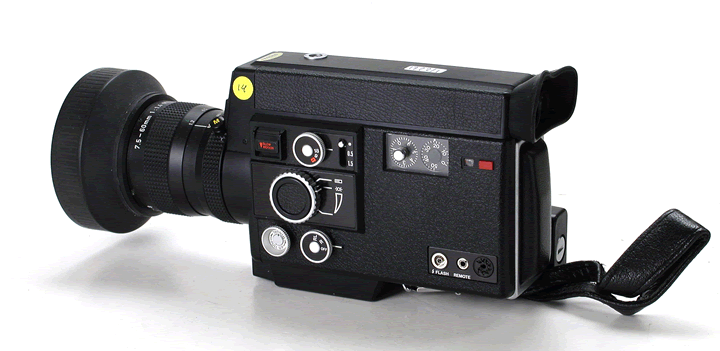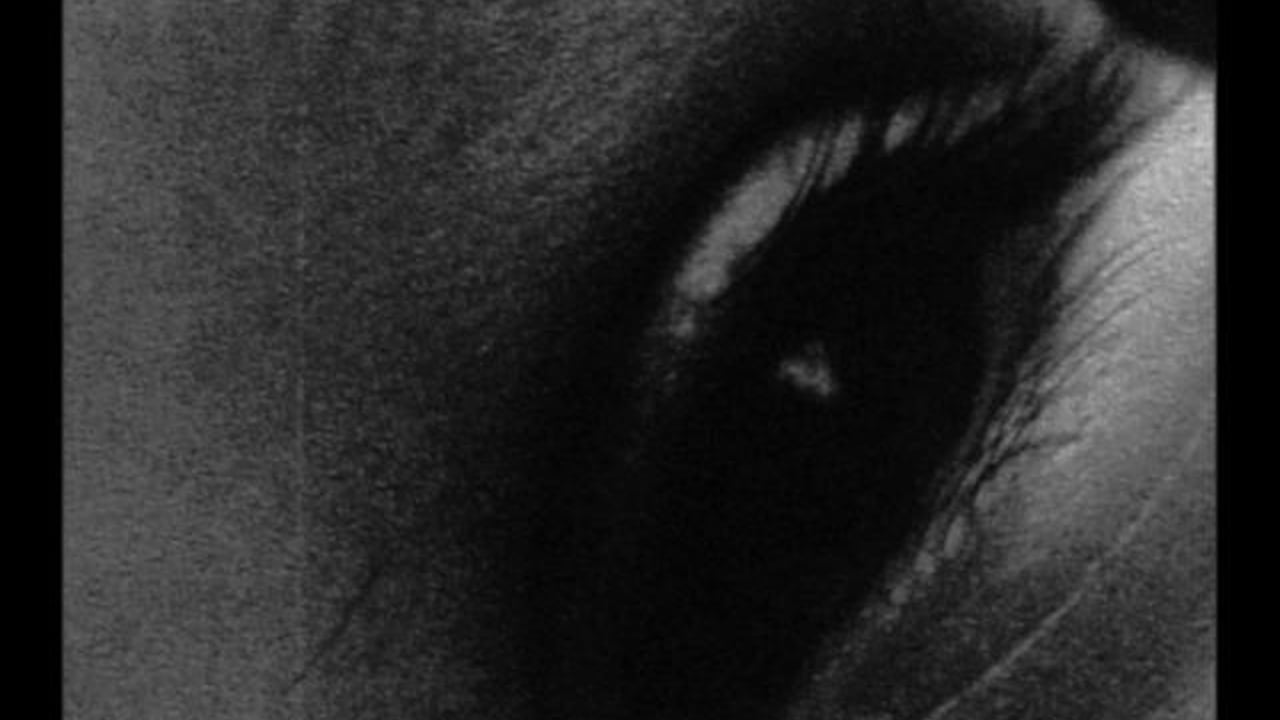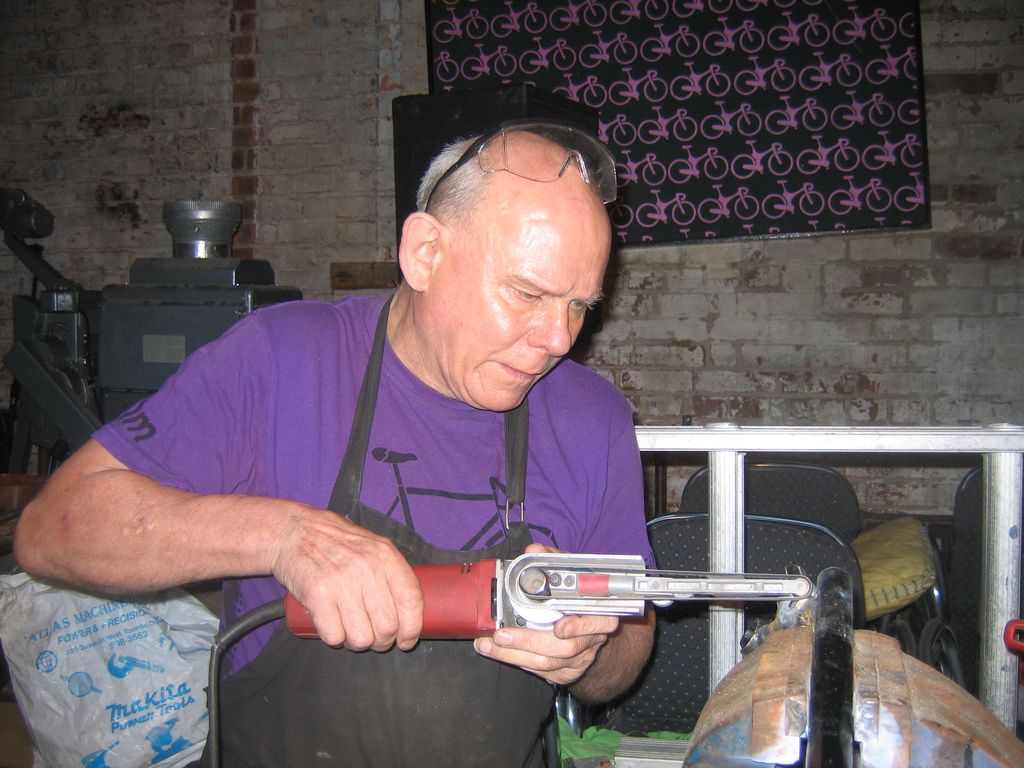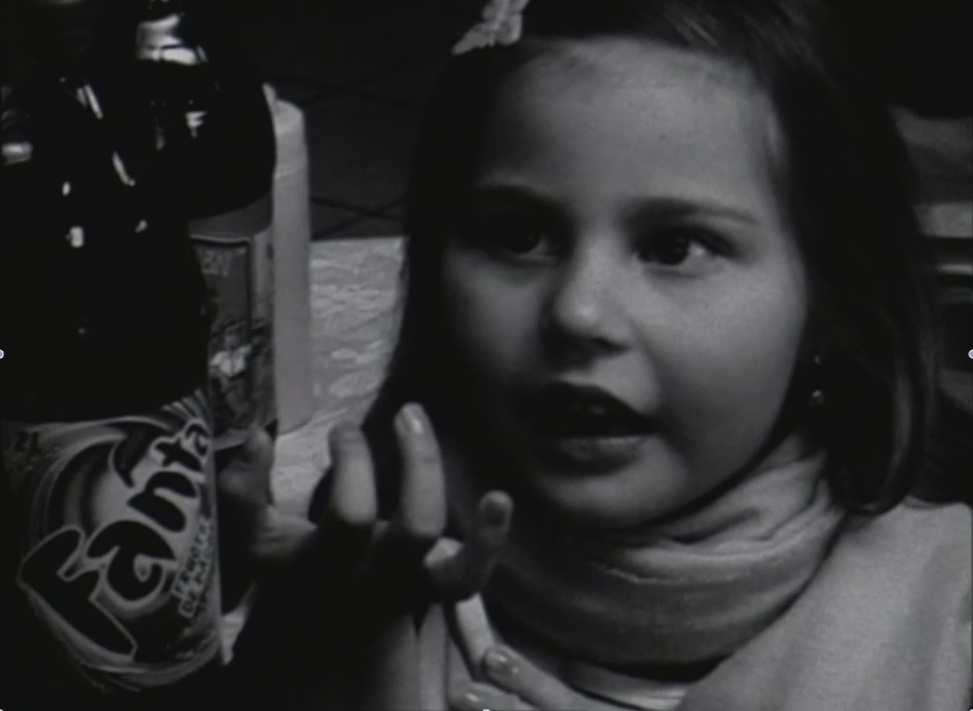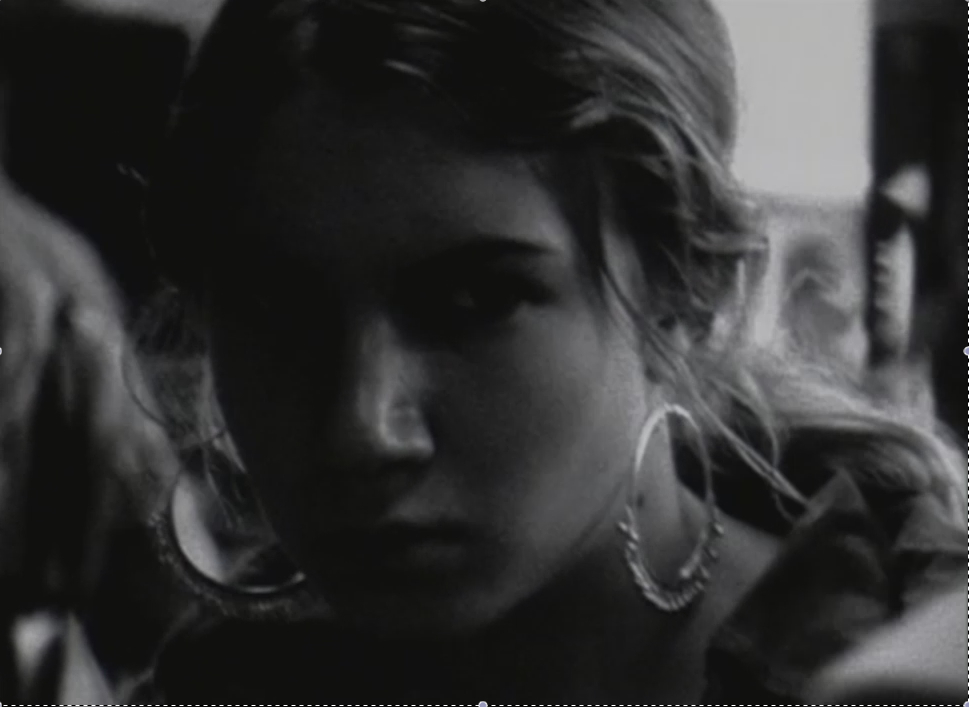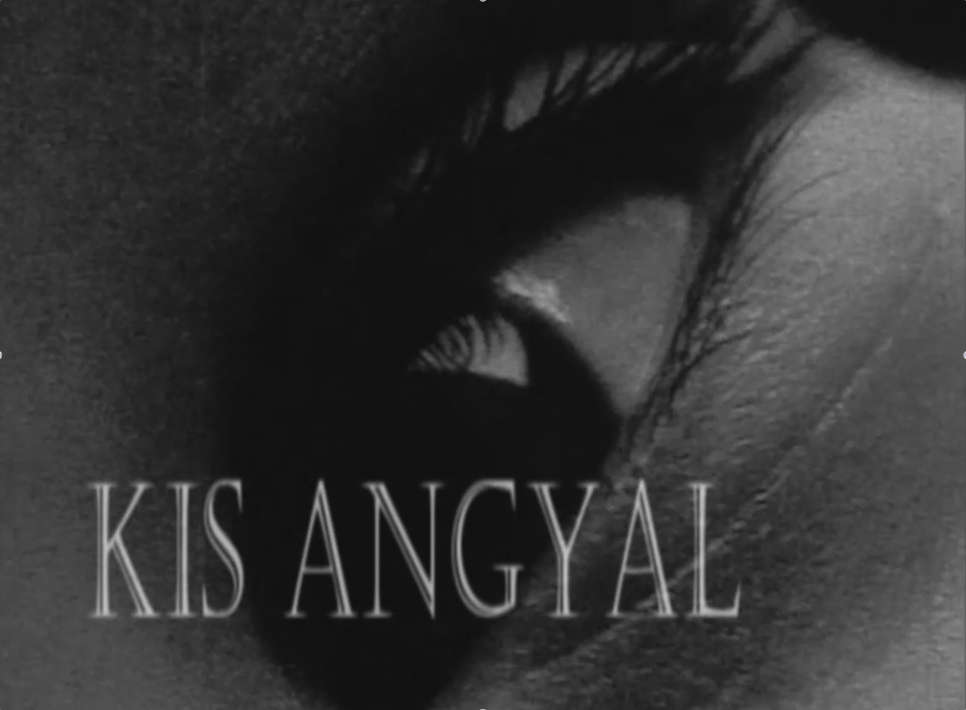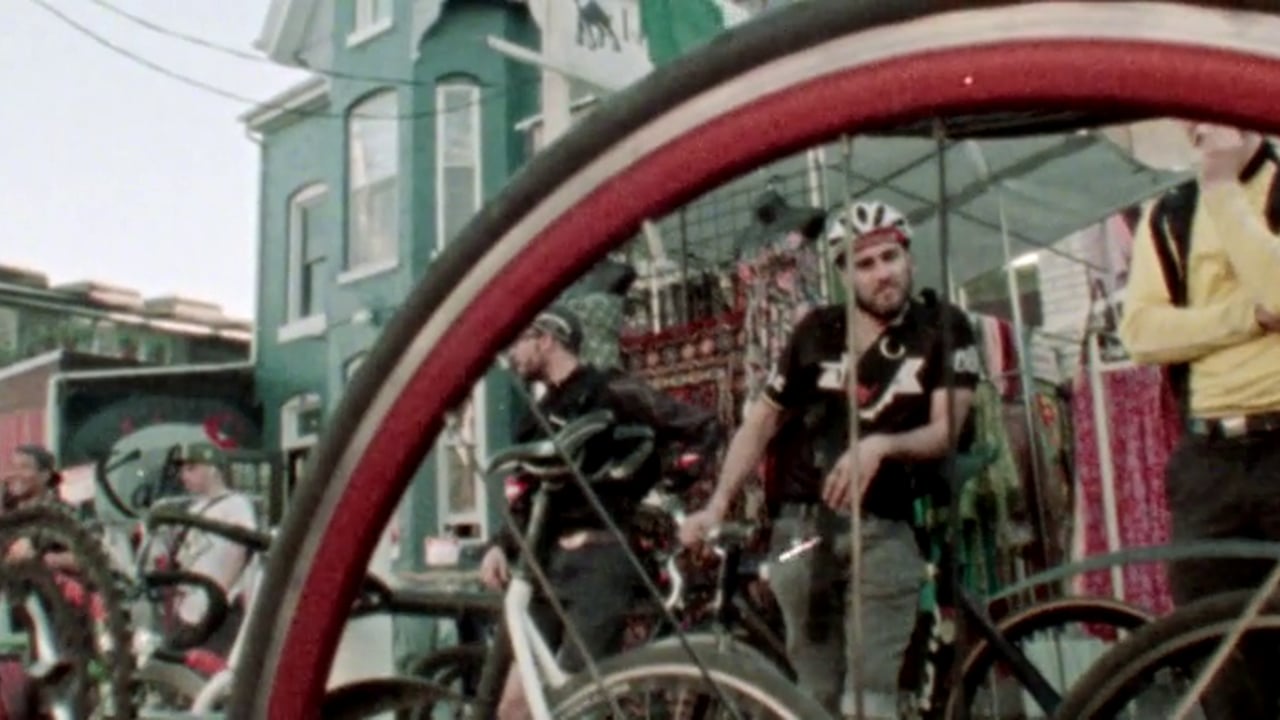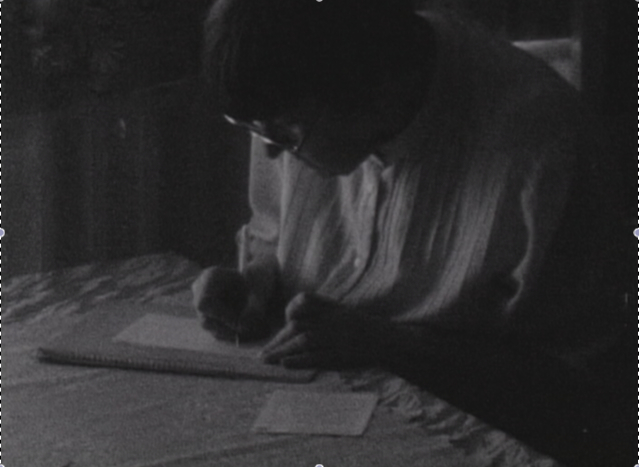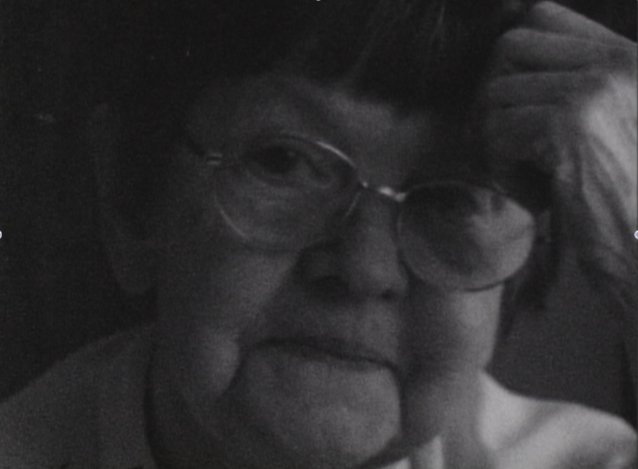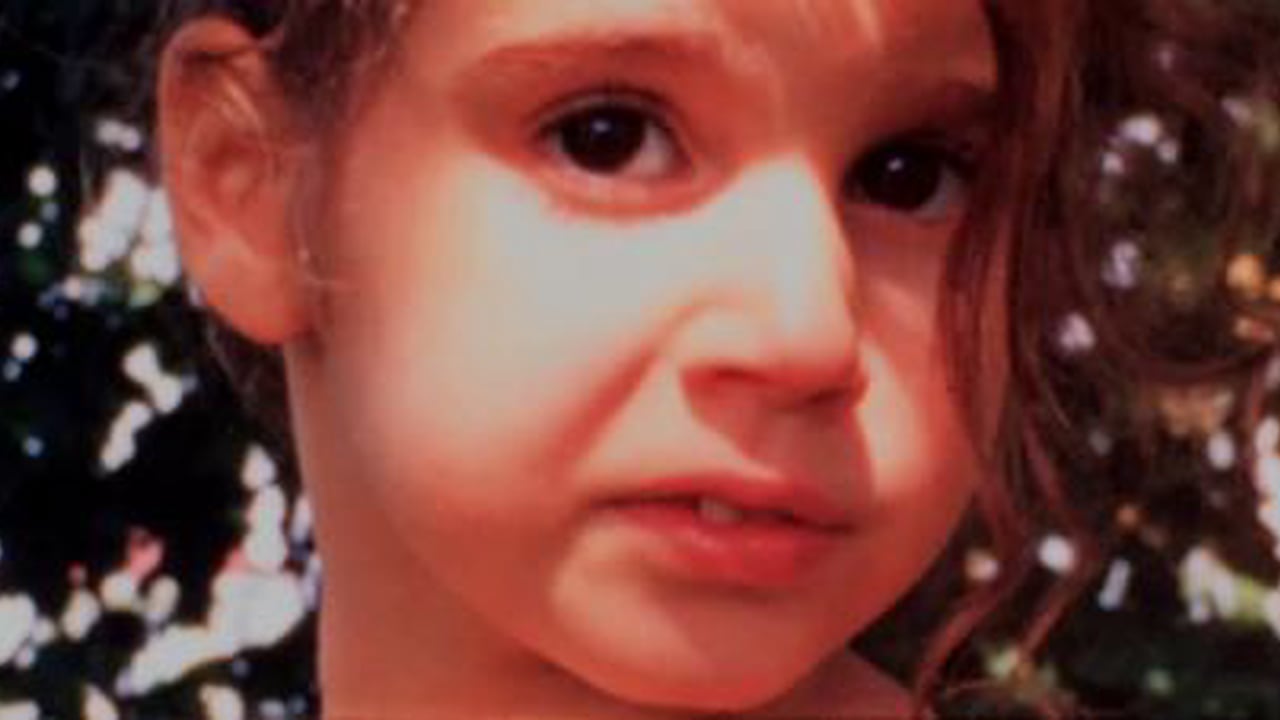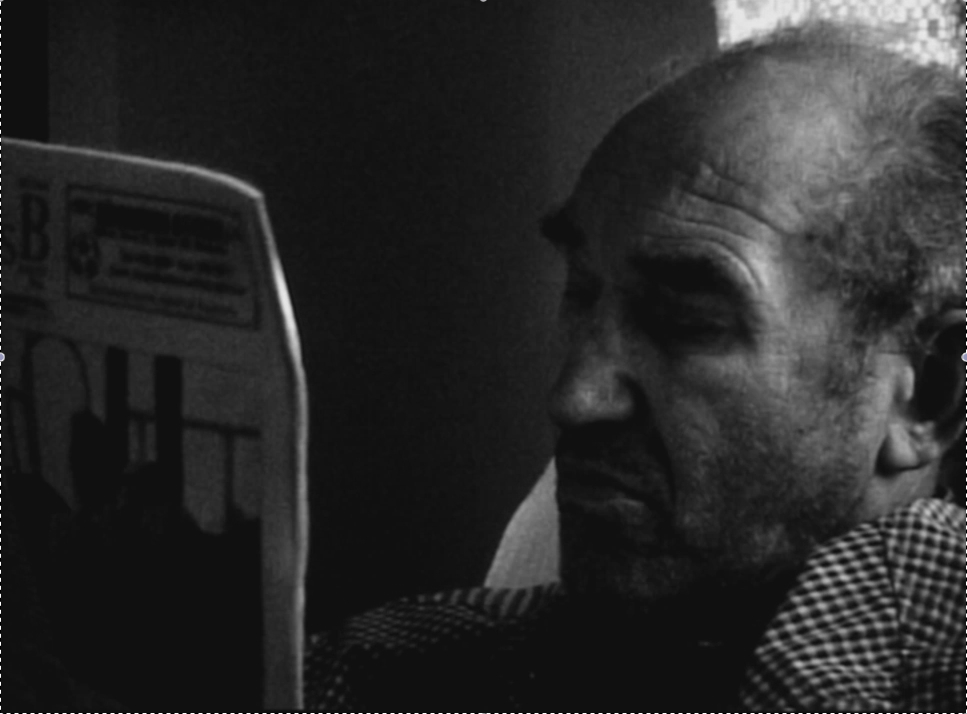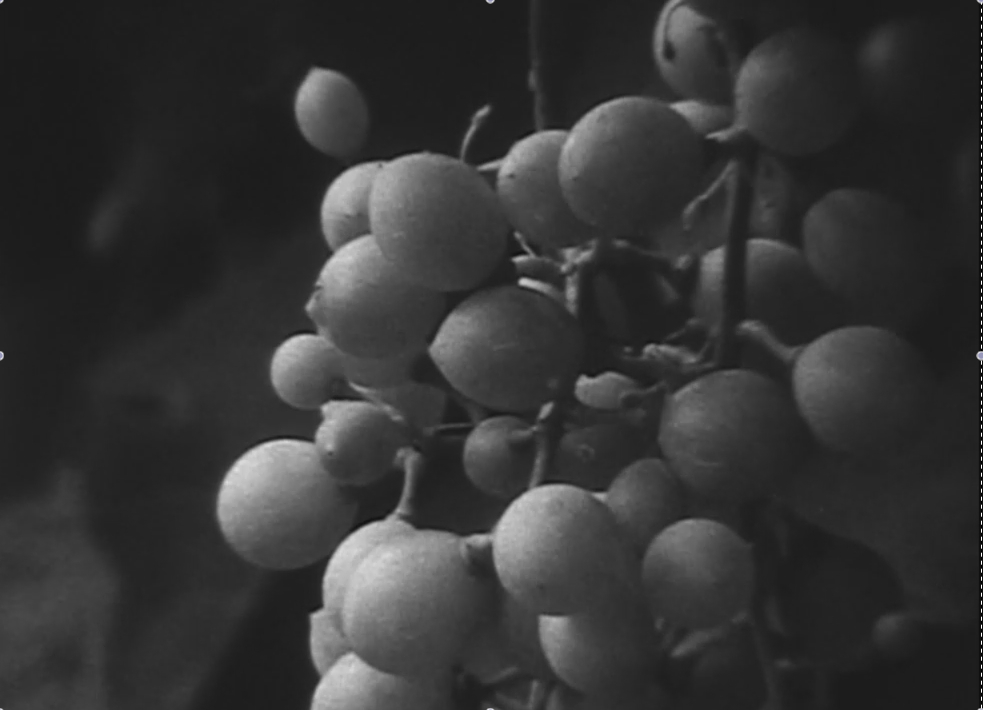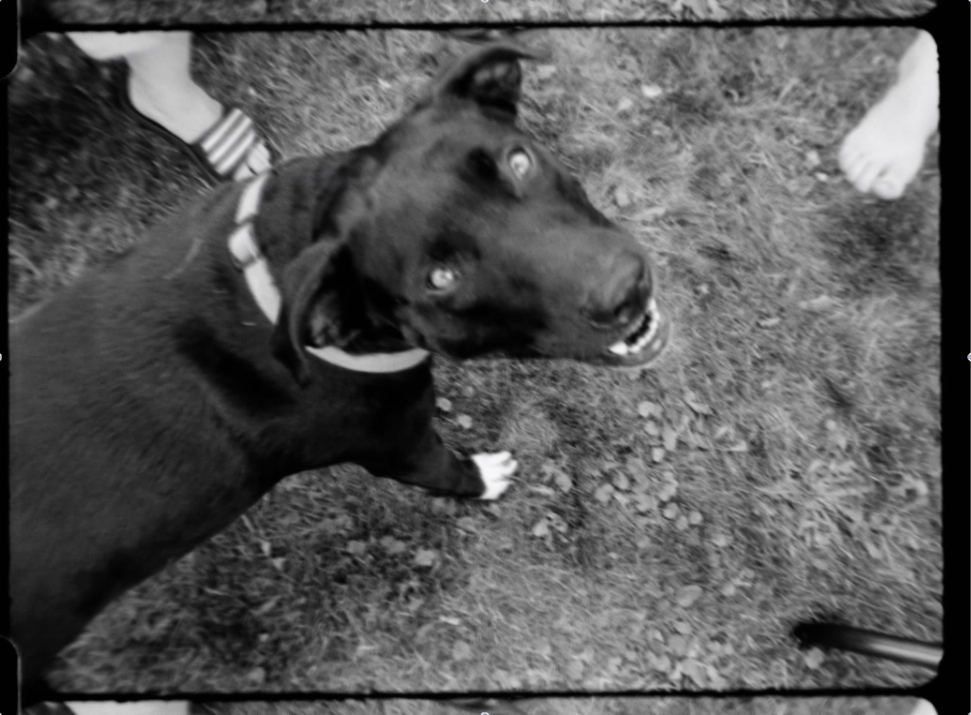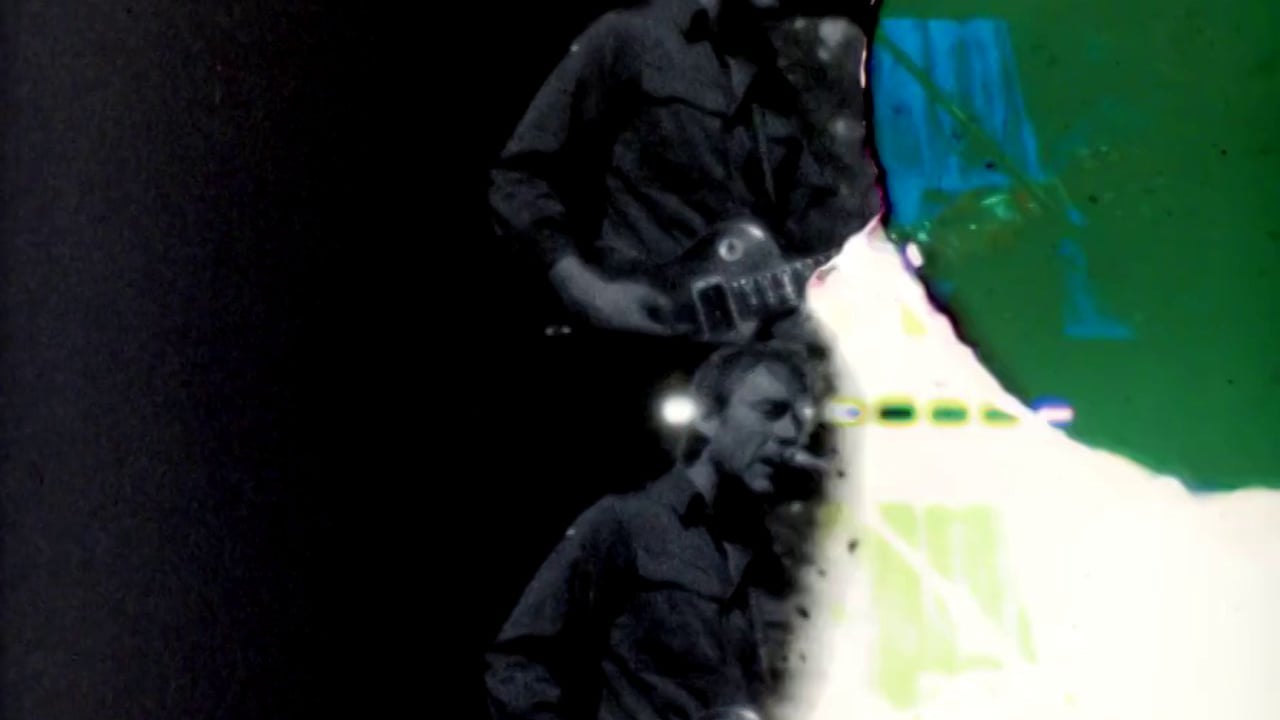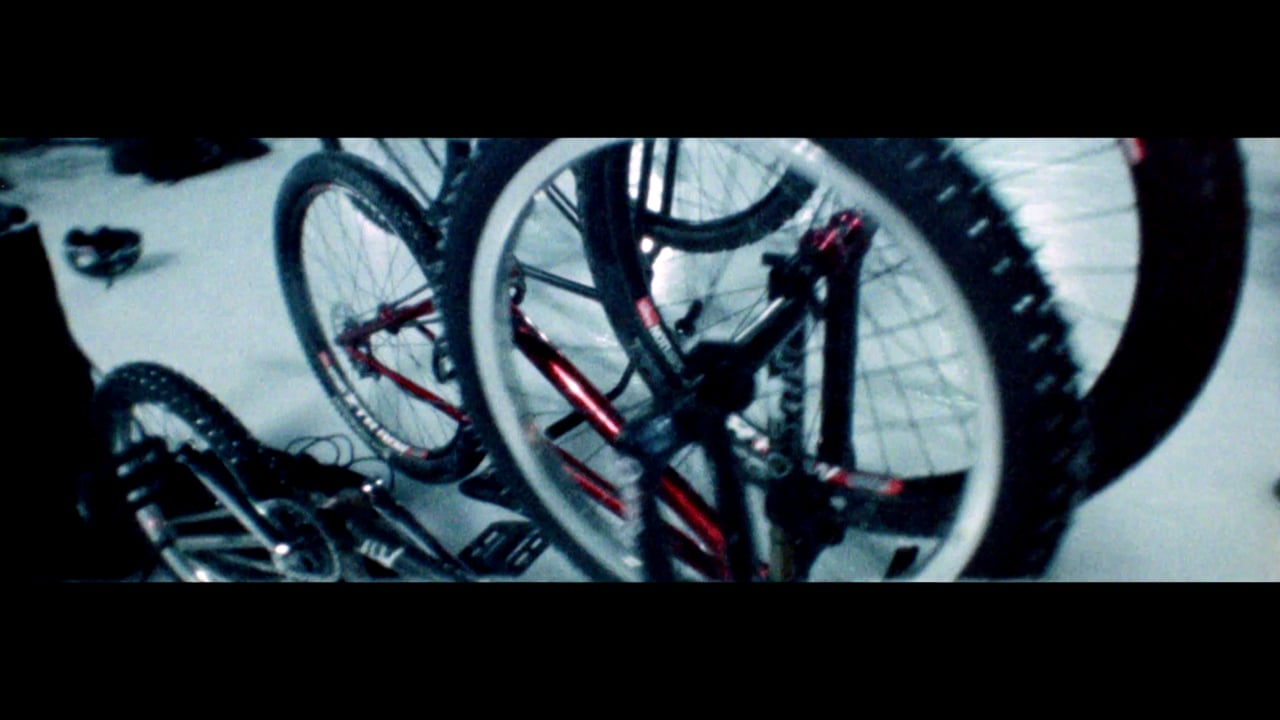It was Holy: an interview with Nicholas Kovats (May 2017)
Mike: How did you get interested in movies?
Nick: I think the substantial virus was embedded as a 12-year old. My father packed the kids in a 70s-era station wagon and drove all the way up to where my dear departed Uncle Danny was dropping clues about a psychotic computer that was killing astronauts. I’m not sure how I figured out he was talking about Arthur C. Clarke’s 2001: A Space Odyssey. I saw an ad in the paper and convinced my parents to allow me to attend with my sister. There were only seven or eight people in a theatre with one of the last deeply curved Cinerama screens. I was stunned into silence watching this space opera poetry. I didn’t have a clue what was happening though the emotional experience and psychology was life affirming. I had questions about religion the poor usher couldn’t answer.
Mike: How did you start making films?
Nick: Years later, I was fascinated by my neighbour’s super 8 camera attempts. He received the magazine Super 8 Filmmaker which I absorbed. In my 18th summer we travelled with the family as a unit for the last time. We were in Hungary when I saw a Canon 814 in a window and I begged my dad to buy it. To physically have my own camera system was a holy experience. My own movie camera. I held it for the longest time. He bought me one roll of Agfa colour reversal film, and I was very careful to expose a minimum amount of frames.
I grew up in a very beautiful area in Bathurst, New Brunswick, off the Bay de Chaleur, adjacent to the Atlantic Ocean. There were reportedly remnants of a Jacques Cartier port with huge logs, support beams. I was fascinated by the macro zoom of this camera and made ultra close-ups. I regret to report that I’ve lost this roll of footage. It was very mystical for me. I didn’t shoot much but the brain went nuts collecting information. I started ordering catalogues from super 8 manufacturers, and professional motion picture suppliers all over the world. I don’t think I ever shot with this camera again, maybe one more roll. It had to wait a long time, until I moved to Toronto in 1989.
I did go to Concordia University in 1982, and studied five years but didn’t finish. I didn’t do what I wanted. I was in discrete mathmetics/digital engineering. In my last year I ended up in film production and my head exploded. I got into making big super 8 productions with the best of the best, mini operas. It was a vibrant scene, just lovely. One is a post-apocalyptic Plus-X thing involving mutants with gas masks who worshipped chicken bones. I staged some violent beatings. They would kill each other for the last remnants of the chicken. There was a lot of filming in snow storms. I would shoot on odd days not worried about matching shots correctly. There would be a storm, and the masked actors would be freezing to death in their minimalist leather, a kilometre away, a tiny dot expanding ever so slowly. I was obsessed with long takes and post-apocalyptic industrial spaces. We found a shack and that’s where the mutant characters lived. I even made my own home-made credits on burnt out matchbooks with chicken bones scattered around them.
I came to Toronto pursuing a relationship. After it ended I became a bike messenger and couldn’t afford to shoot anymore. I shot maybe two rolls which are significant through the 90s, of my children, which are very precious documents. My infant son was a labour of love captured by handheld macro shots. I also shot a roll of fireworks with my Leicina Special super 8 camera. I went all the way to London, Ontario to purchase this legendary science camera that could do fancy stop-motion, I could program time exposures up to three seconds. (In a regular exposure, the shutter opens for a moment to allow light to travel through the lens and strike the film. A time exposure allows the maker to control the amount of time the shutter stays open.)
Silly Billy (4:08 minutes 1995) is a movie in three parts, showing footage I made of my son, fireworks and courier punk bands. I made this as a bike courier. I completed the film after our marriage separation in 1993. It took me a long time to make, shooting when I could.
I had access to bike courier punk bands, and one of my favourite bands at the time Shadowy Men from a Shadowy Planet allowed me to roam onstage with my black and white Plus-X and Leicina Special super 8 camera. The combination of manual time exposure (3 seconds per frame) in conjunction with intervals of 0.5 seconds between frames produced what I call the Francis Bacon Screaming Pope effect. I shot close to 300-500 frames that evening of various musicians at Sneaky Dee’s (bar). The organic fluidity was produced by long exposures that froze people in approximately three positions interconnected by light streaks in each frame. The same technique was utilized for the fireworks but in glorious Kodachrome. The slow motion effect was achieved by setting the transfer playback at approximately 5 frames per second.
I debuted it at Breadspreads, the courier hangout on Temperance Street, between Yonge and Bay. It’s now a very expensive reno. Breadspreads kept us alive, they extended credit for food and tons of beer. We made little money but we could eat and drink. I plopped the projector on the bar John Porter-style, and the frame was this big (holds his hands out). I remember a colleague of mine punching me hard in the arm. What the fuck is this? Yeah, Mike Dick didn’t like me. I was trying to be artistic and it was Friday night and beer was cheap. The audience attention was somewhere else.
I hold CineCycle close to my heart. I make a point of attending as much as I can there. It goes back to when Martin Heath had the original space near the Spadina liquor store in the back alley. I brought my kids, and put them to sleep in an arrangement off the side door where it was safe while I projected the film. My friend Mark Pollard, another courier colleague, brought fifty pounds of guitar equipment on his back to play live to my film. I’ve had a special feeling for CineCycle since that night.
I went back to school, to Sheridan College, to learn how to become a telecom tech for three and a half years. I popped out of school in 2006. My salary rose accordingly and I could suddenly afford film. I went crazy on eBay and bought as many high end super 8 cameras as I could. I started filming and created quite a few short films.
I have unprocessed film from 2009 in my fridge from trips to Hungary. I have a lot of stuff that’s been processed in subsequent years that is scanned and waiting for an edit session. I feel guilty that work sits unedited. I enjoy creating a world through editing as much as filming. That relationship is very important to me. I’ve shot for other people and tend to request a copy, not to edit a parallel version but I feel close to the work… I’m actually so happy simply to create and help others. I’m helping people all the time, perhaps too much, with my equipment, my time,my expertise. That’s a pleasure in itself.
My movies are predominantly uploaded to Vimeo. I was submitting to festivals for a while but I stopped that regime. It was a lot of work and administration, I got discouraged by the amount of entrance fees required. To get a tiny bit of acceptance would cost me a significant amount. My last festival acceptance was at a small gathering in Sackville, New Brunswick in a section curated by Christine Lucy Latimer. I applied for my first Canada Council grant to travel to the festival. They rejected me, but I funded my own way and it was heaven.
I had a 100’ roll of black-and-white UltraPan8 that started in a Budapest graveyard. My ex-partner’s father had just passed, I filmed her walking and reminiscing and touching his gravesite. We left for Rome the next day before heading back to Canada. We spent a day walking around the Coliseum. I finished it at the festival in Sackville amongst the old buildings downtown. The energy was so welcoming. They had a beautiful dilapidated projection space in an old theatre with bowed floors and shafts of light. It was magical. That was in 2012, five years ago, the last time I was involved with a festival.
Mike: What are your thoughts about the local movie scene?
Nick: It’s vibrant, I can’t keep up with the amount of work being shown. But it’s been discouraging getting local work shown, including my films. It’s a pet peeve when I talk to Adam Rosen and John Creson, we get into it and it’s hard. There appear to be fiefdoms, long term entrenched pools of people who select only amongst themselves. I’ve been accused of being a film scientist as if that was something derogatory. Sometimes when I speak about film my bias can be to speak about engineering principles or UltraPan8 and people roll their eyes, but it’s all good.
Mike: Why is it important to shoot film?
Nick: I’ve done quite a bit in digital media. I typically hire a team to do full-frame work. I hired a drone team for a bicycle event at Ontario Place hosted by Red Bull. That’s as corporate as you can get, but we got in as volunteers and produced incredible images. I hired two steadicam cinematographers for a wedding a couple of years ago. I’m a digital technician in my trade, digital is the new kid on the block. I’ve been obsessed with metadata in the form of timecode, I always thought synchronizing an image and sound through timecode… that’s the way to do it! (laughs) Before the internet I went to the Toronto Public Library and photocopied research papers about SMPTE and high end super 8 technology. I have paper stacks from that period.
Film is fundamental to my 12-year-old experience. I was born too late because the video tsunami is the dominant methodology. I’m finally into film in a way that I’m comfortable with but services are contracting and there are hardly any craftsmen left. Film stock is not an issue, but labs… There’s still so much to do in film. I originate on film, digitally scan my work and edit it, then project digitally. That’s my basic methodology. I can speak to the uniqueness of the multi-dimensional film image in terms of the 1 micron particles randomly dispersed in an acetate substrate that can approximate reality much more accurately than the rigid digital 7 micron pixel that’s a two-dimensional matrix.
The density of the particles, one trillion per film frame is tremendous. That technology was perfected 120 years ago and it still holds. The lighting, the exposure, the skin tones, the contrast, it just comes together almost effortlessly. In digital more manipulation is required to reach that natural state. I love handheld cameras, I love people’s faces. I want the face to be predominant, and you’ll see that in my images. Everything about the human is fascinating to me. I don’t like much manipulation around that.
This is a super 8 film called Bike Light (3:27 minutes, 2012). I shot a lot of it in 2010, but it wasn’t edited until 2012. It incorporates two of my loves: cycling and film. I over-engineered the front of my handlebar to mount the Leicina Special super 8 camera using a C-clamp with a ball head. While riding a shock transmits up through the front of the bike, and the camera vibrates just enough to produce that electrical arc effect.
Mike: Each night light (car tail lights, street lamps, buildings) is turned into a kind of live line drawing, the vibrations give the lines a watery wavy look.
Nick: It’s almost as if someone is snapping a whip. I really like patterns. I don’t have much more to say about the film. It’s a physical approach to experience. I programmed three-second exposures per frame and made three circular loops around the city of Toronto on my bike. On one of these loops I tracked a friend of mine (Martin Reiss) who had reflective tape on his back illuminated by a simple LED light on my bicycle. I was originally inspired by still photography, exposing car headlights receding and approaching.
I utilized severely outdated Kodachrome from 1979. In 2010 there were only two months left until the last Kodachrome processing lab (Dwayne’s Photo) was finished. What I wanted was the incredible black density of Kodachrome. The vibrant monochromatic colour pop outs. I suspect the film’s age (29 years!) resulted in the silver metallic dyes not coupling correctly to the multiple emulsion layers, so there were sections of blotchy purple. I meticulously tried to remove all the purple splotch mistakes on my timeline but eventually gave up.
Kis Angyal (Little Angel) (2:23 minutes 2006) is a tribute to my daughter. (Nick cries) I wasn’t expecting this. I went through a horrific long-term family law case around my kids and lost them. They’re here with me in the city but the impacts on our relationships have been tremendous. My daughter reluctantly came on this trip to Montreal. The film shows my sister and her family and my parents were there which is nice, they came up from New Brunswick. My dad is the portal to the world. I start with an image of my son, a macro close-up of his eye in 1993 when I was a bike courier, and it ends with my daughter’s stern face. My father’s face as he turns releases the exploding firework light. Between these two looks is the beautiful simplicity of my niece.
I only had one roll of Plus-X to record her incredible journey from my sister’s to the market, and she had to stop at every point and check everything out. I had to use stop motion to record and impress this moment. I knew I was going to run out of film so I ended up looping that stop motion movement three times. We finally got to the market and I had just enough footage left to get some of the interaction between Adrianne and my mother. My daughter’s in the background and she doesn’t look comfortable. She doesn’t know what to do with the loving close family that we are. But it was wonderful to have her with me, and spend that precious little time. Her mother has been extremely violent, psychotic and anti-family and it’s been very difficult for us to have a normal relationship. I’ve had so much police assistance just to enforce a piece of toilet paper that court orders my time. It doesn’t work, it’s never worked, and it ended up traumatizing my children because there were so many police around trying to keep the peace. We’re closer now, it’s better, but these things damage. It’s quite ironic because I came from such a close knit family.
I used the dark Steve Roach ambient music to offer a clue that there’s darkness in the light. Darkness in the love. I can’t dissect my work and pull out references, I’m an emotional filmmaker. I adapt to landscapes and throw myself into situations with people I love, or where I’m part of a community.
Mayday! (4:07 minutes, 2014) shows the 4th annual Mayday bicycle charity race for the Bicycle Messenger Emergency Fund. The fund is part of an international effort to take care of bike couriers because we don’t have insurance for injuries. We’re looking after our own. They begin by laying their bikes down on the road, a classic alleycat start.
Mike: What is alleycat?
Nick: It began in Toronto in the 1980s when illegal street racing was introduced. The starting point was an alley behind Jet Fuel (coffee shop). This is a variation of a mass start up. The bikes were locked, the manifests were given at the last second describing where you have to make your pick ups along the route. Everyone makes a mad rush to their bicycles, unlocks, and takes off. It’s up to their skill levels to connect the dots and make it back to the finish line. The intention was to approximate a courier’s actual delivery patterns during the day, except in competition. But the competition was always jovial and quickly became an international hit, couriers related to the Toronto experience, the beer drinking, cool bike prizes, t-shirts. It’s become such a big thing.
I participated in the early 1990s although it was illegal of course. We’d end up as a mass, pitch black against traffic. We’d cut right against Yonge (Street) to enter the parking garage at the Eaton Centre. Hit the pick up point, come back down. Whatever the traffic flow was we’d cut across. When the cops were alerted they’d start chasing some of us. There were other routes north of that entrance, someone would open the door and we’d race through the mall. On Richmond Street all ten of us would split against the flow of traffic. You needed a lot of confidence.
Kato Néne és Marika Magyarorszag (Aunt Kato Néne and Marika) (1:28 minutes 2009) was shot in black-and-white super 8 in Marika’s aunt’s home town in Hungary. I only met her 3 times and absolutely adored her. Her husband was a famous Hungarian literary writer. She said you can take my husband’s old Russian communist camera and/or this box of his films. I took the films he made in communist Hungary. He diligently recorded daily life. Some of it is very ponderous, at a high school reunion he films a line of older women coming out a building that goes on forever. But he had precious footage of my ex-girlfriend at 16 and that became very dear to us.
My aunt’s apartment was stuck in 1974. She asked, but why are you filming me? But she knew why. She had lived with a filmmaker for so long.
My Memories of Her Are Missing (2:40 minutes, 2011) was filmed in my parent’s backyard in Bathurst, New Brunswick. This is my niece who now lives in France. We’re in my mother’s garden, beauty comes forth from whatever she touches. This is a couple of years before my father passed. He would sit on his chair on the elevated veranda my mother built out. My niece wanders and explores. She was a bit more reluctant in front of the camera, but the music lends itself to her hesitation, amidst this beauty. There was an approaching storm, the blackness came so quickly, it blew over an umbrella and smashed a glass table shortly after that last shot. I’m just trying to capture the feeling I had on that day with my family before the storm.
The credits are very long because I want everyone to know about UltraPan8. There’s an explosion of stock in super 8 now, you can get almost anything. There’s more than 16mm and 35mm, really exotic stuff. The emerging popularity of televison in the late 1940s spurred development in ultrawide motion picture technology, including Cinerama and Cinemascope. I would like to expand upon these ultrawide antecedents with the introduction of UltraPan8. It’s a new ultrawide film format using modified 8/16mm cameras and the entire width of regular 8mm film. It’s native gate dimensions are 10.52mm x 3.75mm with an aspect ratio of 2.8:1. This is wider than Cinemascope at 2.39:1 and a bit smaller than Cinerama’s 2.87:1 aspect ratio. UltraPan8 represents a 41% increase in imaging area over Super 8 film and a 62% increase over regular 8mm film. Jean-Louis Seguin modified the camera, filing out the gate to make the extra wide image gate with a machine accuracy of .1%. We have about 15 cameras modified. I’m the most active UltraPan8 filmmaker.
Apucikam Megyunk Haza (Papa We’re Going Home) (7:46 minutes 2009) is a portrait of my father, and my return home to see him in Hungary. We used to go there for a month every summer until I was eighteen and left home. I hadn’t been back in 27 years. We had such a wonderful experience, and my family’s cooking was incredible. This is the first time I went back with my former partner, who is Hungarian, from Budapest. This film is my emotional reaction to the sights, smells, mountains.
There’s this idea of making a film that is lighter than air if it’s coupled with the right sounds. That’s what I tried to capture. Super 8 lends itself to that project because of the way small cameras can move in space. I like rotational crane shots, I was trying to emulate smooth trajectories with my body.
Hungary, 1956. The revolutions against the Russian oppressors who had occupied the country since the end of the Second World War began in the universities of Budapest. Hungary was a rare East European country that physically confronted the occupation, and over a two-week period they held out against the Russians. My father fled, along with my uncle and his pregnant wife and child. My uncle is a man of few words, he doesn’t show much emotion, but he was very close to my father. He told me recently at my father’s passing that he was running arms for the rebels and as a result he couldn’t attend his own father’s funeral in 1970. He was warned by the RCMP in Ottawa not to go over.
When they got to Canada my father met my mother in Bathurst, New Brunswick and the rest is history. My father made a point of connecting us with his heritage and his large family, we became very close with our Hungarian cousins as a result.
At that time I was so thrilled to have met a Hungarian woman who became my partner. It had been an unspoken dream. She instigated this trip and we travelled all over Hungary. The film starts in a villa my father bought for his parents in the early sixties. It turns out he was helping 17 relatives on the sly. My mother argued with my father: I have four kids to feed, I need more money! He said: No! My father was hardcore that way, but he was helping people in secret. He eventually gave cash to friends who brought it to his parents to buy a house. In order to buy a house, you had to look after the people who were already renting it, so he had to buy a second home for the tenants.
My father wanted this home to be shared by all the Kovats in Hungary. It was such a mystical place. But one uncle’s family decided to take over, and another uncle was placed in a bottom room, and he was so stubborn – stubborness is legendary in my family — that he never left. Both men were horticulturists, they built beautiful gardens and trees. Plums grow in the backyard, I wound up with close-ups of the legenary plums of Hungary, and the peaches. They also had their illegal moonshine in the back to make pálinka, a traditional Hungarian dessert. The beautiful old porcelain stove upstairs. Oh what a place.
The second portion shows Marika’s family up in the mountains of Budapest sharing a traditional potluck in colour negative. Farther up the hill we rode a Communist children’s train that runs from a camp for children during the summer. The children wear uniforms, it’s all very orderly and nostalgic. The train passes Himmler’s old residence. He used to brag that he needed only 100 men to administer the final solution because the Hungarians were so efficient. After Poland, Hungary was responsible for shipping the greatest percentage of Jews to the death camps.
The film returns to black and white at the end, that’s not a stock shot but an old steam locomotive. I switched to Plus-X to give it a more timeless feeling.
Now I Understand (3:48 minutes, 2016) is the record of a bike messenger reunion, all of us met in the 90s. It’s a controversial film in this household because the chickens die brutally. It’s a film I would consider circulating to festivals if I was inclined. I think everything comes together: my love of faces, portraiture as you put it, people I’ve known for a long time. I’ve captured people’s characteristics.
It was a very interesting weekend because two of us are now reformed drug addicts who moved north of Toronto and became organic chicken farmers. They told us before coming to the reunion that they would bring two chickens and show us how to kill them respectfully. I have beautiful 35mm photography of the killing. Too often we don’t see what we eat. That’s why the film finishes with the quote: “Show me what you eat and I will show you what you are.” In Hungary my uncles and aunts would kill a chicken or occasionally a pig for meals. It terrified me hearing that in the backyard. We were not allowed to see the actual ceremony.
The film is my commentary on urbanism, and its invisible processes. We love the product, we consume chicken to such a degree, but we’ve lost the connection to where it actually comes from. That’s what they brought to us and it’s right there in my camera. It’s a holy moment. It ended tragically for the chicken farmers though.
This is called LOW “Just Make it Stop” (4:04 minutes 2014). It was shot on specially perforated Kodak 200D color negative (UltraPan8 2.8 R8) pushed one stop (400 ASA). An internegative 16mm print (50D) was struck but not processed. The 16mm print was then hand-processed using Richard Touey’s Chromoflex technique at a LIFT (film co-op) workshop. I applied random tape shapes and then processed the film as colour negative, then peeled more of the tape off and processed as colour reversal, then peeled the last of the tape and processed as black-and-white reversal. The last remaining pieces of tape had mixtures of all three different film processes on its edge that bleed into the main image. Some workshop participants like John (Creson) and Adam (Rosen) got very artistic with their shapes, but I love randomness so I made it as random as possible.
I shot the band Low in Toronto’s Great Hall from a single position. Low are a band that consists of Alan Sparhawk and Mimi Parker, a very special couple of Mormons. They make music of the Gods and don’t mind people taping their shows.
Ice Bike! (11:26 minutes, 2014) fuses my love of skating, bicycles and Ultrapan8. First I walked, then ran and finally put on my skates to chase cyclists on ice with my Bolex Ultrapan8 film camera. The Ice Bike or Icycle winter races have been a treasured staple in February for over 14 years. They started on Toronto Island where couriers would take chainsaws to cut ice blocks to form an infinity track. It was formalized as a charity event in the hockey arena at Dufferin Grove Park. The serious heats involve handmade studded tires with a density of 500-800 roof tacks per tire, handcrafted by individual cyclists. The studs are amazingly adhesive, so the faster winter cyclists can bank steeply. The best part of the evening involves the public non-studded event called The Rubber Race. There’s a sense of fun, nakedness, Superman costumes, anything goes. It has the crazy DIY messenger spirit from the 90s when we did everything ourselves, from illegal road races to co-op bike repair shops and taking care of ourselves. The comraderie and beer drinking are legendary.
I didn’t drink or do drugs because I was a harassed, pressurized father trying to raise his kids. It was horrible financially but you became addicted to it physically. I did it for twelve and a half years, 240,000 kilometres, I couldn’t do anything else. For the last two years I started helping friends with their computer systems and they started encouraging me to go further in that direction. It took me two years to get into Sheridan and it was surreal. Walking five kilometres an hour instead of 25 km average velocity. People sitting down for ten hours at a time. My diabetes actually got worse. Though it wasn’t well controlled as a bike courier being constantly tired and weathered with rain. I remember two rain stretches where I scarred my left lung from pneumonia. It never really dried out. But I don’t regret it at all, I evolved and became more physically confident. I could make a decision and follow through. In traffic that can be life or death, you commit or you don’t, you hesitate… whack! It was more aggressive back then, SUVs were starting, bigger cars, more traffic density. It changed me forever.
Mike: Is courier culture anti-capitalist?
Nick: Oh yeah. We work for the man but we detest the man. There were a lot of punk rock bands. There were even groupies around the couriers, that was funny. The couriers were predominantly male, but there were also women and some were so accomplished, faster than the men, incredible workers. I always felt we were all equal, working hard at the same shitty job. That’s the way most of us operated, we were very protective of each other. Brenda was the lone voice for animal rights. She was scary if motorists confronted her. We have some old video from her legendary encounters. Don’t mess with her. She’s a sweetie.
Do I have more to say? Yes but I’m anxious to get back on my bike.

